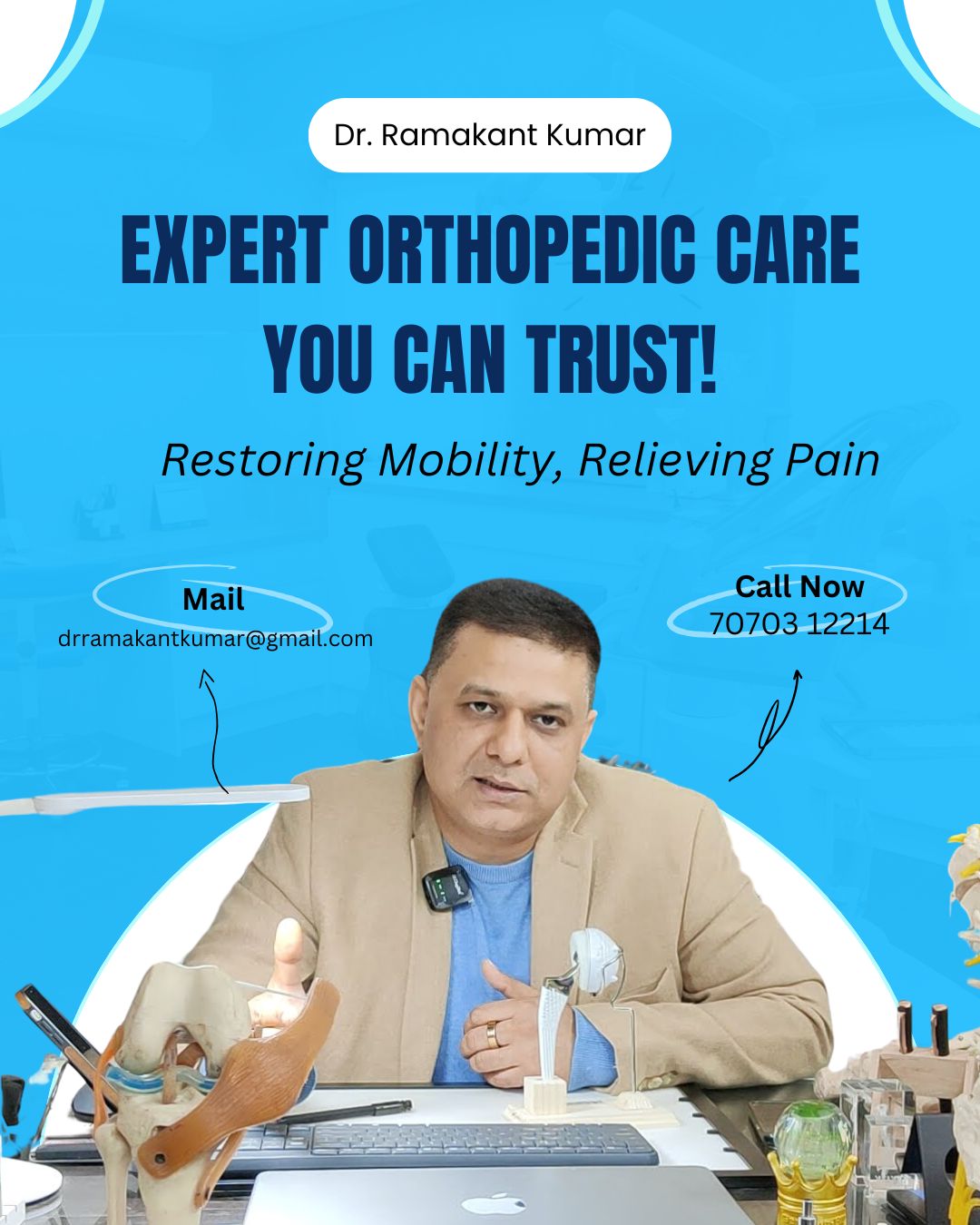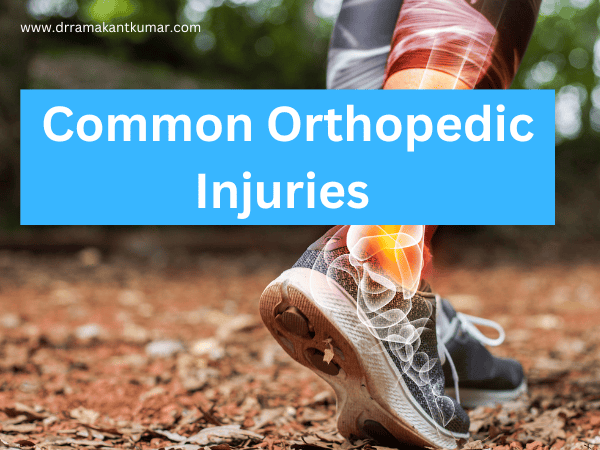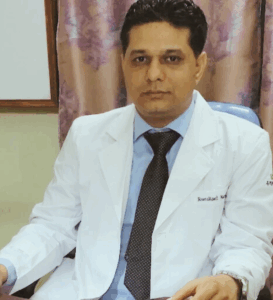Common Orthopedic Problems in India are a category of physical injuries that affect the musculoskeletal system, which includes bones, joints, muscles, tendons, ligaments, and other connective tissues.
These injuries can result from a variety of causes, including accidents, sports-related incidents, overuse, or degenerative conditions.
Acute Orthopedic Injuries can range from minor sprains and strains to more severe fractures, dislocations, and chronic conditions like arthritis.
Further they can cause pain, reduced mobility, and a significant impact on a person’s overall quality of life.
This introduction provides a glimpse into the broad spectrum of common orthopedic injuries, which are a prevalent concern in the field of medicine and rehabilitation.
Contents
- 1 Common Orthopedic Injuries – A Comprehensive Guide
- 1.1 #1. Sprains and Strains:
- 1.2 #2. Fractures:
- 1.3 #3. Tendonitis:
- 1.4 #4. Rotator Cuff Injuries:
- 1.5 #5. Carpal Tunnel Syndrome:
- 1.6 #6. Meniscus Tears:
- 1.7 #7. ACL & PCL Tears:
- 1.8 #8. Rheumatoid Arthritis:
- 1.9 #9. Herniated Discs:
- 1.10 #10. Scoliosis:
- 1.11 #11. Bursitis:
- 1.12 #12. Plantar Fasciitis:
- 1.13 #13. Achilles Tendonitis:
- 1.14 #14. Tennis Elbow and Golfer’s Elbow:
- 1.15 #15. Ankle Sprains:
- 1.16 #16. Cubital Tunnel Syndrome:
- 2 Treatment of Orthopedic Injuries
- 3 Orthopedic Injuries and Arthritis: Managing Pain and Improving Mobility
Common Orthopedic Injuries – A Comprehensive Guide
Common orthopedic injuries include a wide range of musculoskeletal injuries and conditions that affect the bones, joints, muscles, ligaments, tendons, and other structures in the body.
Some of the most frequently encountered Examples of Orthopedic Injuries and conditions include:
#1. Sprains and Strains:
Sprains involve the stretching or tearing of ligaments, while strains involve the stretching or tearing of muscles or tendons. These injuries often occur due to overuse, sudden movements, or accidents.
#2. Fractures:
Fractures are breaks in bones and can range from simple hairline fractures to more severe compound fractures.
#3. Tendonitis:
Tendonitis is the inflammation of a tendon, often caused by repetitive motions or overuse. It commonly affects the shoulder, elbow, wrist, and knee.
#4. Rotator Cuff Injuries:
The rotator cuff is a group of muscles and tendons that stabilize the shoulder joint. Injuries can range from inflammation (tendonitis) to tears in the tendons.
#5. Carpal Tunnel Syndrome:
This condition involves compression of the median nerve in the wrist, leading to pain, numbness, and weakness in the hand.
#6. Meniscus Tears:
The meniscus is a C-shaped cartilage in the knee. Tears can occur due to twisting or sudden movements and can lead to pain and limited mobility.
#7. ACL & PCL Tears:
ACL tears are common knee injuries, often occurring during sports or high-impact activities.
Posterior Cruciate Ligament (PCL) Tears: PCL tears are less common than ACL tears but can also result from traumatic injuries to the knee.
#8. Rheumatoid Arthritis:
Rheumatoid arthritis is an autoimmune condition that primarily affects the joints, leading to inflammation, pain, and joint deformities.
#9. Herniated Discs:
Herniated discs occur when the soft inner portion of a spinal disc protrudes through the outer layer, often leading to back or neck pain and nerve compression.
#10. Scoliosis:
Scoliosis is an abnormal curvature of the spine, which can cause back pain and affect posture and mobility.
#11. Bursitis:
Bursitis is the inflammation of the bursae, small sacs filled with synovial fluid that cushion and reduce friction between bones, tendons, and muscles.
#12. Plantar Fasciitis:
This condition involves inflammation of the plantar fascia in the foot, leading to heel pain and discomfort.
#13. Achilles Tendonitis:
Inflammation of the Achilles tendon, which connects the calf muscles to the heel bone, causing pain and limited mobility.
#14. Tennis Elbow and Golfer’s Elbow:
These conditions involve inflammation of the tendons in the elbow and are typically caused by repetitive arm motions.
#15. Ankle Sprains:
Common injuries resulting from twisting or rolling the ankle, often during physical activity.
#16. Cubital Tunnel Syndrome:
Compression of the ulnar nerve at the elbow, leading to numbness and tingling in the ring and little fingers.
These are just a few examples of common orthopedic injuries and conditions. It’s important to seek medical attention for any orthopedic problem to receive an accurate diagnosis and appropriate treatment.
Treatment may include rest, physical therapy, medication, splints, braces, or, in some cases, surgical intervention.
You can also read about >>> Best Exercises for Neck Pain at Home
Treatment of Orthopedic Injuries
Certainly, orthopedic injuries are common and can affect people of all ages.
Orthopedic Injury Treatment often involves a combination of medical care, physical therapy, and sometimes surgery.
It’s important to consult with a qualified orthopedic doctor like Dr. Ramakant Kumar in Patna for proper diagnosis and personalized treatment plans.
Here are some general guidelines for the treatment of common orthopedic injuries:
#1. Fractures and Dislocations:
- Immediate Care: Stabilize the injured area, immobilize the limb, and seek medical attention promptly.
- Medical Treatment: Dr. Ramakant Kumar will assess the severity and may recommend casting, bracing, or surgery to realign bones.
- Rehabilitation: Physical therapy to restore mobility and strength after the cast is removed.
#2. Sprains and Strains:
- I.C.E. Therapy: Rest, Ice, Compression, and Elevation to reduce swelling and pain.
- Pain Management: Over-the-counter pain relievers and anti-inflammatory drugs may be prescribed.
- Physical Therapy: Exercises to strengthen the affected area and improve flexibility.
#3. Tendon and Ligament Injuries:
- Immobilization: Splints or braces to restrict movement and promote healing.
- Physical Therapy: Targeted exercises to improve stability and prevent re-injury.
- Surgery: In severe cases, surgical repair might be necessary.
#4. Arthritis:
- Medications: Pain relievers, anti-inflammatory drugs, and disease-modifying drugs to manage symptoms and slow down joint damage.
- Lifestyle Changes: Weight management, low-impact exercises, and assistive devices for daily activities.
- Injections: Corticosteroid or hyaluronic acid injections to reduce inflammation and provide relief.
#5. Back Pain:
- Physical Therapy: Strengthening exercises, stretches, and posture improvement.
- Pain Management: Medications, hot/cold therapy, and epidural injections for severe pain.
- Surgery: Reserved for cases where conservative treatments don’t work, such as herniated discs.
#6. Sports Injuries:
- Rest and Ice: Immediate rest, ice application, compression, and elevation to minimize swelling and pain.
- Rehabilitation: Physical therapy tailored to the specific sport, focusing on strengthening and flexibility.
- Gradual Return to Activity: Ensuring the injured area is fully healed before resuming sports activities.
Orthopedic Injuries and Arthritis: Managing Pain and Improving Mobility
When it comes to common orthopedic injuries, timely and expert medical care is essential for a swift and successful recovery.
In Patna, one name stands out in the field of orthopedics – Dr. Ramakant Kumar. With his exceptional skills, vast knowledge, and compassionate approach, Dr. Kumar has earned a reputation as the Best Orthopedic Doctor in Patna.
Patients can trust in his expertise to provide top-notch care, tailored to individual needs, ensuring a return to a pain-free and active lifestyle.
If you or your loved ones are facing orthopedic issues, choosing Dr. Ramakant Kumar means choosing the path to healing and well-being.




